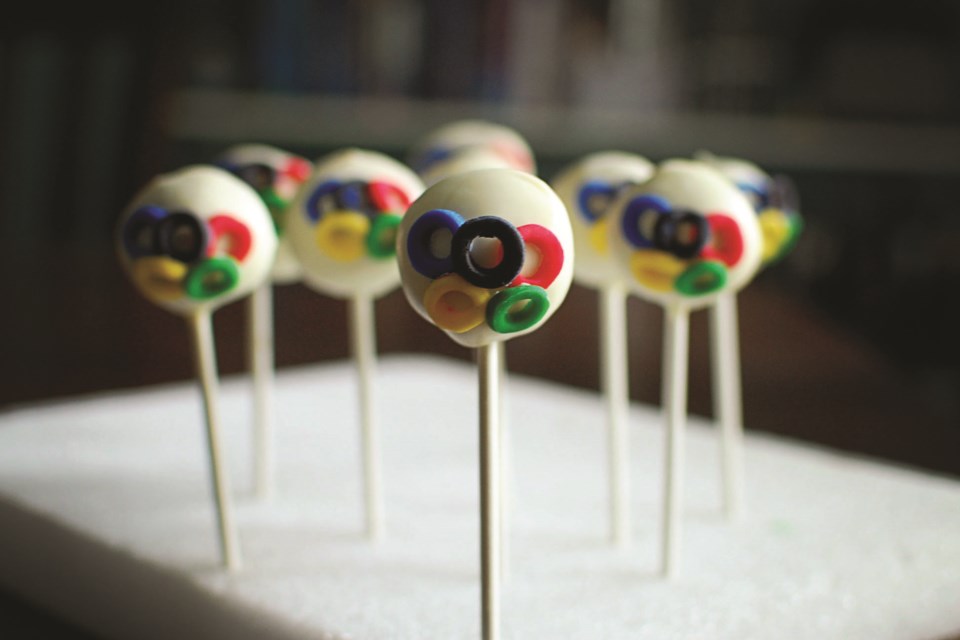For as much as we love watching Olympic athletes perform at the absolute height of their sport, with the benefit of social media, audiences these days are just as intrigued by Olympians’ lives behind the scenes as they are with the ones they see on their TV screens.
And with young athletes bringing their large social media followings along for their Olympic experience in Beijing, we’re getting a fascinating window this year into what it takes to keep nearly 3,000 Olympians fed (not to mention their extensive coaching and medical teams).
Much has been made about the safety and logistics of preparing and delivering food to Olympic athletes in the midst of a global pandemic, with promises of robot chefs and conveyor belts. While robot servers have been spotted slanging cocktails and lowering food from the ceiling in the media centre, athletes in the main dining halls have mostly reported serving themselves—and the reviews so far have been mixed, to say the least. Plenty of athletes—from first-time Olympic snowboarder Tessa Maud to veteran and snowboarding icon Shaun White—have complimented the wide array of cuisine on offer at the 24-7 cafeteria. Reports from China’s quarantine hotels have been less glittering. One Russian biathlete posted a photo of an unappealing-looking meal consisting of plain pasta, potatoes, scraps of meat on a bone, a piece of translucent chicken, and an unidentifiable red sauce she said she was served for “breakfast, lunch and dinner for five days already” at one of Beijing’s quarantine hotels. The coach of the Finnish men’s hockey team complained one of his players is “not getting good food” during his stay at a hotel. Germany’s team chief had similar concerns with the living conditions for skier Eric Frenzel, who was isolating after testing positive for the virus, with the coach highlighting the lack of cleanliness, insufficient Wi-Fi, and poor food.
China’s quarantine hotels notwithstanding, it’s worth remembering the incredibly high standard to which modern Olympians hold their food these days. Olympic menus have evolved by leaps and bounds over the decades, as nutrition and the profound effects diet have on athletic performance have become more widely understood.
In a 2011 study published in Oxford’s Nutrition Reviews, researchers traced the history of food provision at the Summer Games over the past century and found that “early research favouring protein as the main fuel for exercise was reflected in [Olympic] menus from 1932 to 1968.” Despite conclusive research in the ’60s noting the clear benefit of carbohydrates on athletic performance, carb-rich menus didn’t become de rigeur at the Olympics until into the ’70s. Athletes’ preferences evolved quickly between 1970 and 2000, driven largely by the “dramatic expansion” of the Games themselves and the emergence of systematic sports nutrition research.
Sponsorship by food brands also became a larger factor, beginning with the 1984 Olympics in Los Angeles. The 1992 Games in Barcelona were the first time a nutrition information desk appeared at the Olympics, while the Sydney Games in 2000 saw the addition of a dedicated menu website as well as the first widespread digital collection of data around Olympians’ dietary needs and preferences.
“The history of catering at the [Olympic Games] tracks the evolution of sports nutrition practice from anecdotes and myth towards an established specialty in nutrition and dietetics grounded in evidence-based science,” the study concluded.
These days, the variety and quality of options on offer at the Olympics is almost unfathomable, and last summer’s Tokyo Games might have just set the bar. Tokyo featured two main dining halls, one serving all Japanese food (the gyoza seems to have gotten rave reviews across the board), and the other offering all manners of international cuisine.
Satiating thousands of elite-level Olympians also means accommodating some pretty unique dietary needs. During the 2012 Summer Games in London, we heard swimming superstar Michael Phelps claim he consumed up to 12,000 calories a day (he later scoffed at this bit of self-mythologizing, noting it’s impossible to eat that much in a day, but nonetheless, the dude eats a lot while training), while Jamaican sprinter Yohan Blake told reporters he ate 16 ripe bananas every 24 hours in the lead-up to his races. At those Games, an estimated 1.2 million meals were served, including 25,000 loaves of bread, 75,000 litres of milk and 330 tons of fruit and vegetables.




